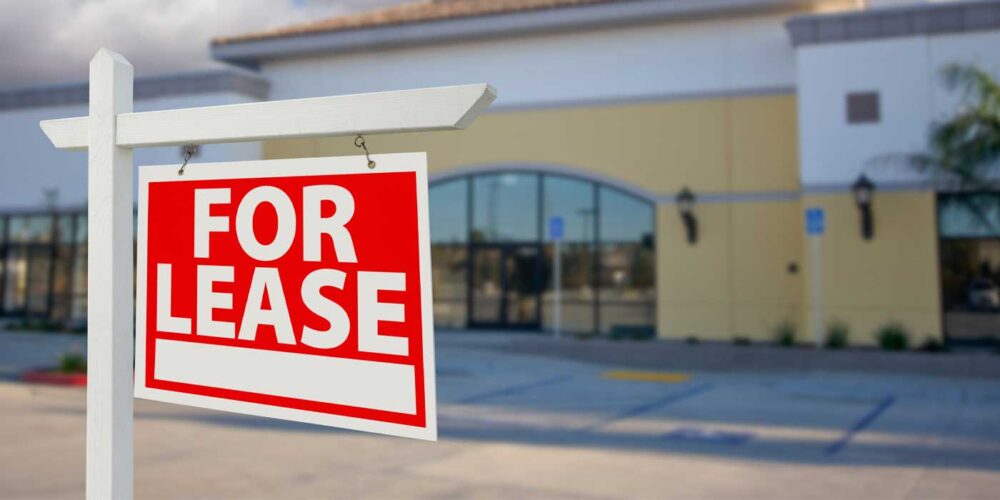Do you lease or own the real estate? This is one of the first questions we ask a prospective client when discussing a new engagement as ground leasing has become increasingly common in the carwash industry. There are a variety of reasons for its growing popularity, but not all ground leases are created equal. If not structured properly, the lease has the potential to adversely impact the value of the carwash and the ability to obtain financing for it.
Given a ground lease creates a long-term, binding and typically non-cancelable commitment between the operator and their landlord, it is critical to the success of the carwash to ensure that the ground lease is structured properly at the outset.
Understanding a ground lease
In a ground lease, a tenant (or lessee) leases land from a landlord (or lessor). In such a scenario, the tenant owns the buildings and improvements, while the landlord only owns the land. Given the tenant owns the buildings and improvements, it holds them on its balance sheet and therefore, has the right to depreciate them. The tenant also has the right to use them as collateral for a loan and to mortgage them.
For these reasons, with a properly structured lease, a carwash operator leasing the land can obtain financing on terms that look relatively similar to those the operator would obtain if he or she owned the land. After all, a key consideration for a lender in determining loan terms is the collateral being given to the lender.
If the lender’s funds are financing the buildings and improvements and the lender can have a senior lien on those buildings and improvements, then the terms should look relatively similar whether the land underneath the building and improvements is owned or not. However, the devil is in the details as this is only the case if the lease is structured properly.
Proper lease structure
So, what does a properly structured lease entail? Here are some basic components applicable to all leases:
• The initial term: This is the length of time the lease will be in effect.
• Extensions or options: These are usually exercisable by the tenant in their sole discretion if they wish to continue the lease beyond the initial term.
• Base rent: The price paid to occupy the landlord’s land.
• Rent increases: These are usually structured as either annual increases (1.5%-3%) or increases that occur every five years (7.5%-12%). If rent doesn’t increase over the term, then the property value can decline due to inflation.
• Lease structure: The most common structure is a triple net (NNN) lease wherein the tenant is responsible for all taxes, maintenance costs and insurance costs.
A properly written ground lease will be clear on what the property can be used for, what control the landlord has over the design of the improvements and who owns what gets built. Leases may allow for any legally permissible use or they might specify the property can only be used as a carwash. While some leases give the landlord the right to approve the plans for the buildings and improvements, as well as those for any future alterations, others don’t.
Regardless, the lease should state that the landlord owns the land, but during the lease term the tenant owns the building and improvements (though its fine if ownership reverts to the landlord at the expiration of the lease term).
Term matters
It’s important that the lease term is long enough. How long is long enough? Here are two things to think about in answering that question.
First is the impact the length of the remaining term (inclusive of extension options) has on valuation. From a valuation perspective, the value of a leased location decreases as the lease gets closer to expiring. Why? Carwash businesses are often valued using a discounted cash flow model and if the remaining lease term at the time of valuation (or sale) is too short, the terminal value will be very small, which greatly reduces the present value.
To simplify it, consider the following example. If you have two carwashes that each produce $700,000/year in net income, but one site has 20 years remaining on its lease and one site has five years remaining on its lease, which would you pay more for? Naturally, the first one because when you buy a site you buy it with the expectation of receiving future cash flows. Therefore, 20 years of cash flow is more valuable than only five years of cash flow.
The length of the remaining term (plus extension options) also impacts the tenant’s ability to obtain financing. It’s common practice that lenders will not offer a loan amortization schedule that is longer than the initial term of the lease plus options. In other words, if you have a 20-year lease term with no options, a lender won’t approve a loan for you that has a 25-year amortization. The same is true for a 10-year initial term with two five-year extension options. In fact, some states have banking regulations that cap the maximum term or amortization lenders can offer when financing a location secured by a leasehold mortgage, requiring the term or amortization to be shorter than the remaining lease term.
Other factors to consider
Beyond a sufficiently long remaining term, there are other things lenders look for in a lease. A well written leasehold mortgage provision in a lease will address items including affirming the tenant’s right to obtain financing secured by its leasehold interest in the property and the right to record a leasehold mortgage or deed of trust to secure the loan. It will discuss notice obligations including the landlord’s obligation to notify the lender of a default by the tenant so that the lender has a chance to cure the tenant’s default before the landlord terminates the lease and evicts the tenant. It often will address what happens in the event the lender needs to foreclose as doing so means the lender still needs to adhere to the lease in order to avoid having it terminated by the landlord. Typically, a prohibition against modifying the lease without lender consent while a leasehold mortgage is in effect is included as well.
Other aspects that a tenant needs to consider before entering into a long-term lease include the delivery condition of the property at the time the tenant takes possession and at the expiration of the lease. If you’re acquiring an operating carwash on leased land, this isn’t necessarily applicable between landlord and tenant, as the obligation to deliver the property in a certain condition lies with the seller of the site, not the landlord.
However, if you’re entering into a lease on a property that you intend to develop with a carwash, the delivery condition is important as the lease will state if the landlord is delivering the property to the tenant in “as-is” condition or if the landlord needs to do any demolition, clearing, grading or off-site work, such as bringing utilities to the site. If the landlord is responsible for doing this work, it could potentially save the tenant hundreds of thousands of dollars and months of time.
The lease will also discuss the condition in which the property is to be delivered back to the landlord at the expiration of the lease. Sometimes a lease requires a tenant to restore the property to the same condition the property was in when the tenant took possession. This can mean that a tenant can be contractually obligated to demolish the buildings and improvements at the end of the term, which can be costly.
No different than would be the case in a purchase agreement for a piece of land, leases for properties intended for future development can contain contingency periods during which the tenant can do certain investigations, due diligence and apply for entitlements or building permits. A lease is often cancellable by the tenant during these periods if the tenant’s findings aren’t satisfactory to the tenant.
Portions of the lease will deal with condemnation or eminent domain considerations. In other words, if during the lease term the city decides it needs to acquire a portion of the property to expand a road, does the tenant get to share in the proceeds from the sale? Does the tenant have a right to terminate the lease if the portion of land being taken adversely impacts the business?
The lease will discuss maintenance and insurance requirements of the parties. If the leased property is part of a larger shopping center, the tenant may be obligated to pay Common Area Maintenance charges or CAMs. Regardless, the landlord will want to ensure the tenant is obligated to maintain the property to a certain standard. From an insurance perspective, the lease will discuss whether both landlord and tenant are obligated to carry insurance, amounts of coverage required, types of insurance required and who has a right to share in insurance proceeds should a casualty occur.
Sometimes properties get contaminated. The contamination can result from contaminants migrating on-site from adjacent properties or from activities conducted on the property. The lease will touch on who is responsible for remediating contamination should any be discovered on the property during or even after the lease term.
The lease will touch on assignment and sublease rights. Can the tenant sell its business and assign the lease to anyone? Or, does the buyer/assignee need to operate a certain number of carwash locations or have a certain net worth?
Provisions regarding assignment and sublease rights can greatly affect the size of the buyer pool should the operator decide they want to sell their business. If the landlord has the right to withhold consent or to add conditions to an assignment of the lease to a new tenant, the landlord has the ability to impact or delay a sale.
Over the course of a long-term lease, a landlord may decide they want to sell the underlying land they lease to the carwash operator. Some leases address these situations and contain either a Right of First Offer provision or a Right of First Refusal provision. These provisions can require the landlord to offer to sell the property to the tenant before putting it on the market as is the case with a Right of First Offer. What’s even better for the tenant is a Right of First Refusal, which gives the tenant the right to match any offer the landlord desires to accept for the property.
When it’s all said and done, there are lots of moving parts in a lease and it is critical that a tenant be advised by experienced and competent legal counsel and advisors when negotiating and entering into a long-term lease. If something gets missed during the drafting, a tenant might be forced to live with it for decades.
Even if the initial tenant can live with something getting missed, a potential buyer of the carwash in the future might not be able to; therefore, today’s error could impact tomorrow’s sale. On the flip side, if the lease is properly structured, it can position the operator for years of success and a multitude of options when the time comes for financing the project or selling its business.
Reuven Birnkrant is the CEO of PetroCal Associates, a boutique real estate finance and brokerage firm serving entrepreneurs seeking to launch, grow, and sell carwash, gas station, and c-store businesses. Mr. Birnkrant oversees loan origination and lender partnerships to help clients secure loans exceeding $1 million for the acquisition, renovation, and refinancing of their properties and businesses. Additionally, he oversees the real estate and business brokerage activities of the firm to assist clients with the acquisition, sale, or leasing of single sites or portfolios.
Be sure to check out our follow-up podcast interview with the author of this article below!














